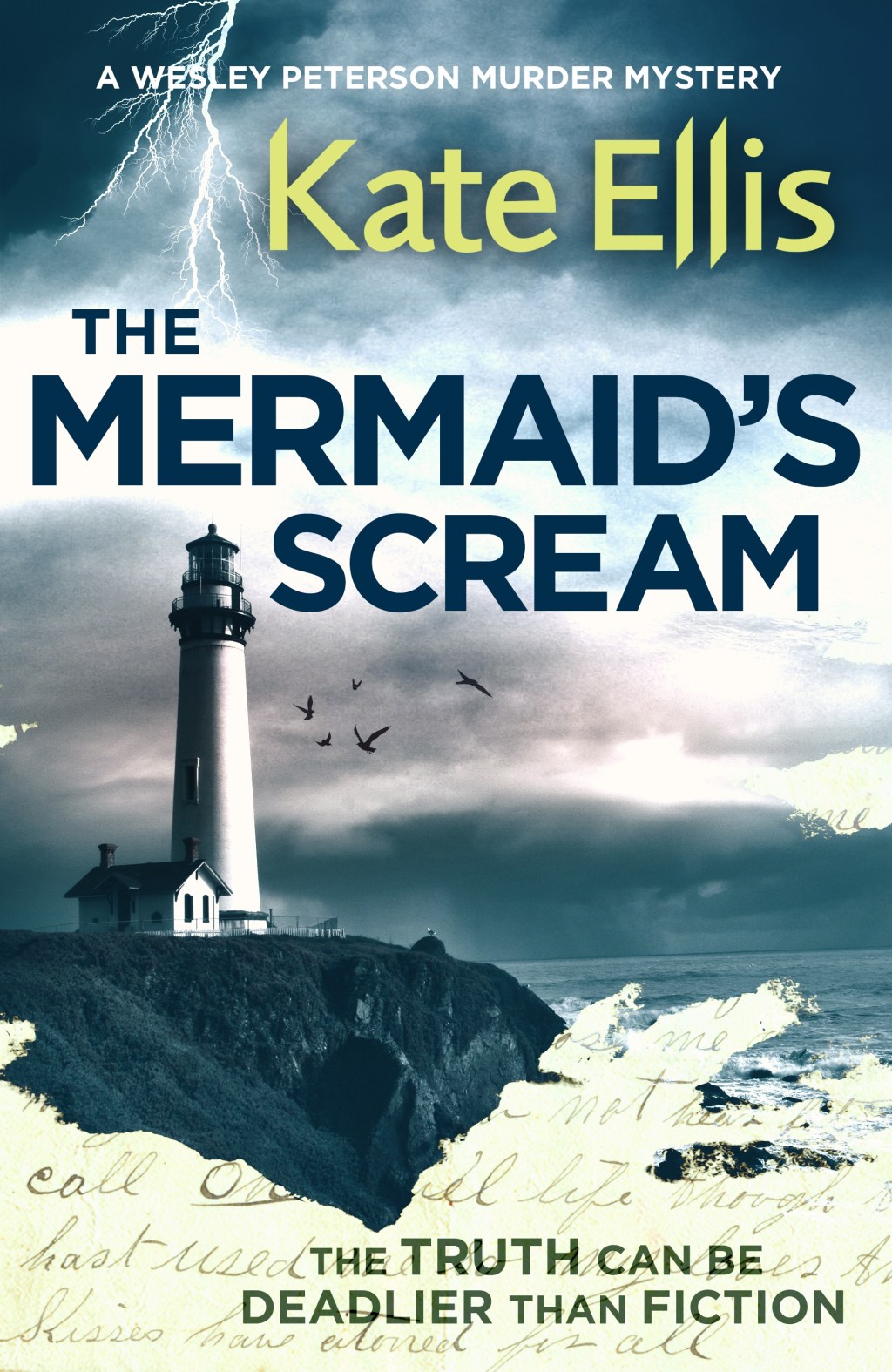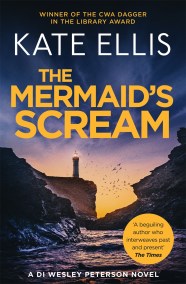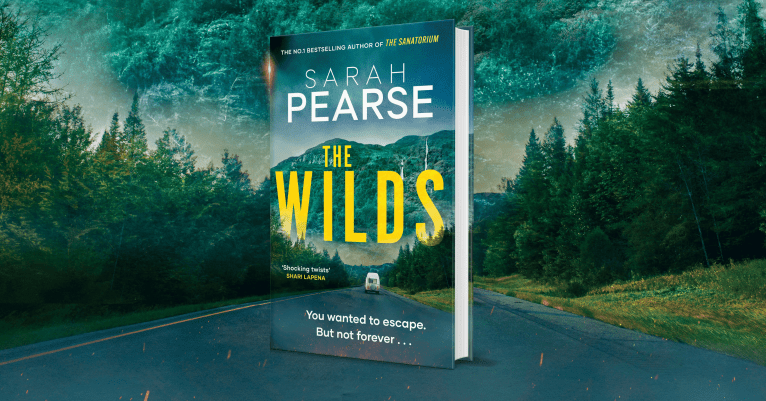Kate Ellis and the inspiration behind The Mermaid’s Scream

Best known for her Wesley Peterson mysteries, Kate Ellis writes intelligent, intricately plotted detective stories that will have you hooked from cover to cover. Read on to found out about the inspiration behind her new historical thriller, The Mermaid’s Scream.
Visiting libraries and talking to readers is part of a writer’s job these days. Personally I really enjoy these visits and I love meeting the people who enjoy my books. However, I realise there must be a lot of writers who view them with dread – and it was this that provided my initial idea for my latest Wesley Peterson novel, The Mermaid’s Scream.
When Harper Lee, the author of that great book To Kill a Mockingbird, died a while ago she was famous not only for the book she wrote but for shunning all publicity. This set me wondering what might happen if a young biographer attempted to shatter the self imposed solitude of a reclusive author and intruded into a private life that might hold secrets best kept hidden.
The Mermaid’s Scream begins when young writer Zac Wilkinson who’s working on a biography of reclusive author, Wynn Staniland, fails to turn up at a library where he’s arranged to give a talk. The police treat it as a disappearance until Zac is found brutally murdered in woodland. DI Wesley Peterson is on the case and he has to find out whether the subject of Zac’s biography, Wynn Staniland, is connected in any way to his death but when Wesley starts to delve into Zac’s own past, he makes some alarming discoveries.
But this isn’t the only case Wesley has to deal with because a middle aged couple have been found dead at a nearby caravan park, apparently poisoned. And, according to the pathologist, it isn’t a case of a double suicide but murder.
Everyone who’s familiar with my Wesley Peterson novels will know that there’s always a historical mystery lurking somewhere in the background and The Mermaid’s Scream is no exception. In the nineteenth century murder was often regarded as popular entertainment and in fairs throughout the country marionettes would re-enact the latest gruesome death. One particular favourite was the case of Maria Marten who was famously slaughtered in Suffolk in 1827 but I have added a new murder to the puppet’s repertoire.
In my office I keep a shelf full of books about the history of Devon and when I was researching The Mermaid’s Scream, one story in particular from South Devon’s past caught my attention. Laura Dimes was a Victorian heiress and, as gullible heiresses tend to do, she fell for a man who married her for her fortune. Laura was later found dead in mysterious circumstance in the grounds of her home, Oldstone near Blackawton. She went out riding one day and was later found dead, sitting upright in a pool with the water just over her head. Her widower came under suspicion but, apparently, had an alibi and her killer was never found.
In The Mermaid’s Scream the (very similar and fictional) murder of Mary Field became a cause celebre in the area and the wealthy descendant of the main suspect back in the nineteenth century asks archaeologist Neil Watson to conduct an excavation in the hope that it will prove his ancestor’s innocence. It also turns out that Wynn Staniland based his most famous novel on the case . . . and that the circumstances of his wife’s suicide were remarkably similar to the death of Mary Field.
I dedicated this book to all librarians everywhere and I was thrilled to be shortlisted for the CWA Dagger in the Library this year. I hope everyone enjoys the twists and turns of The Mermaid’s Scream – it’s been great fun to write about reclusive authors . . . even though it doesn’t bare much resemblance to reality!
The Mermaid’s Scream is available in paperback on the 3rd August.
'A beguiling author who interweaves past and present' The Times
Most assumed that literary legend Wynn Staniland stopped writing because of his wife's tragic suicide. Yet writer Zac Wilkinson hopes to reveal the true story to the world in his upcoming biography of Staniland.
When Zac is found brutally murdered, DI Wesley Peterson finds that Staniland is a link between Zac's death and an unexplained poisoning of a couple in a local caravan park. He suspects that the killings are a grim re-enactment of the murder of Mary Field, which inspired Staniland's best-known novel.
As Wesley begins to unravel decades of deception, he discovers that someone close to him is involved - and the truth proves almost too much to bear . . .
Whether you've read the whole series, or are discovering Kate Ellis's DI Wesley Peterson novels for the first time, this is the perfect page-turner if you love reading Elly Griffiths and Ann Cleeves.
PRAISE FOR KATE ELLIS:
'I loved this novel . . . a powerful story of loss, malice and deception' Ann Cleeves
'Haunting' Independent
'Unputdownable' Bookseller
'The chilling plot will keep you spooked and thrilled to the end' Closer
'A gripping read' Best
'A fine storyteller, weaving the past and present in a way that makes you want to read on' Peterborough Evening Telegraph







